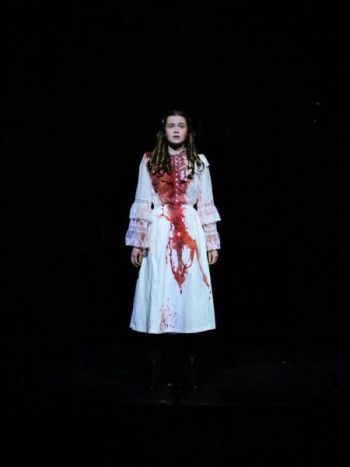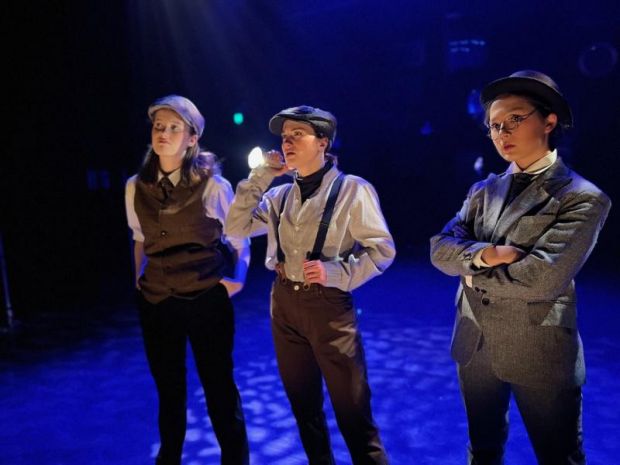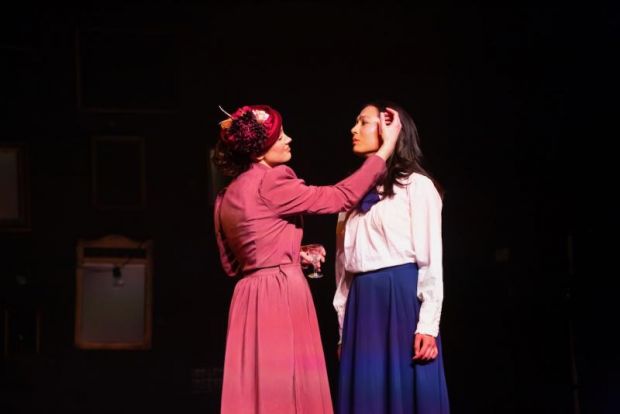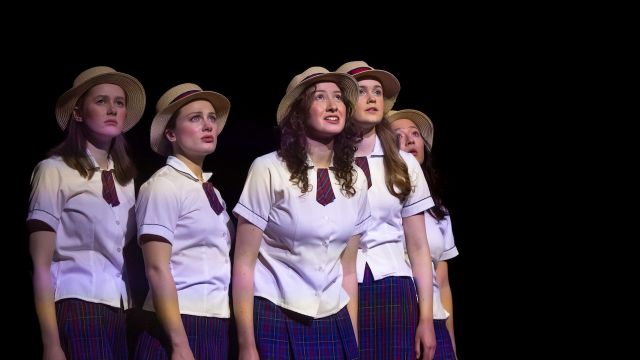Picnic at Hanging Rock
Hobart has a perfectly wonderful theatre carved into a quarry. Such a venue must have been the obvious choice for a play set in the shadow of a monolith. The Peacock Theatre was not used but instead the cavernous recess of the undressed stage of the The Playhouse is used to evoke those things that are just out of sight.
With the tabs and back curtains removed, the dark space is skilfully lit to highlight the isolation of the actors in the landscape. Orange from above is a perennial reminder of the oppressive heat whilst side lighting traps the performers in altered spaces. The language of the play is poetic and redolent of country in the description of flora and insect life. The bush is alive and humming without one single set piece to impair the imagination of the audience. Transitional music augments the ambience.

The house curtain is never deployed during this production. The rear wall of the stage, a permanently open state, is covered in antique mirrors. Whilst a picture frame takes on some significance in Lindsay’s novel, these are mirrors for a reason. This play encourages the audience to take a good look at itself. It is an exhortation to contemplate what we have done with the land and what we believe to be true. These ideas underpin a thematically rich work. The mystery of what lies inside the mirror is the abyss that seduces.
Five actors deliver outstanding performances in the telling of this tale. Each actor takes multiple roles. The beginning of the play is very stylised, the actors dressed in contemporary school uniforms and speaking directly to the audience. It is unclear who is who as the performers recount the inciting incidents in the third person. What might be otherwise tedious is made engaging by impeccable diction and vocal characterisation. Then, without one noticing, the girls slip into period costume, and the action continues.
The play requires a great deal of versatility, physicality, and memorisation from the cast. Picnic at Hanging Rock is a wordy ensemble piece in which every performer is of equal significance, and each has their especial moments. Each actor is up to the task.

Emily Hardie takes the roles of the police officer and heiress, Irma, the only one to return from the rock. Hardie is young to able to imbue the policeman with any great deal of authority although she does convey the humour in the role. This is a petty criticism of what is otherwise a mature and highly capable performance.
Skye Li-Byrne, as Sarah and Edith, is compelling in facial feature and voice. Isolated in the school, Li-Byrne holds the stage. The scenes between Li-Byrne and Mikaela Nichols are powerful.
Mikaela Nichols as Mrs Appleby is riveting. Nichols can convey a much older person with more than convincing verisimilitude. Her performance is finely nuanced, her diction impeccable, and her sense of timing finely honed.

Stella Wesseldine comes to prominence in the role of the Englishman, Michael Fitzhubert. Lost on the rock, Wesseldine also demonstrates she can hold the stage. Wesseldine is yet another highly capable actor.
Lucy Willis plays Albert and Mademoiselle demonstrating significant skill with a variety of accents. As Albert, Willis is convincing with out overplaying the role.
It cannot be stressed enough that all of these (quite) young women, are highly capable, and skilled, and consistent. The sense of ensemble is strong.

Much credit is due to Ian Williams and Suzen Parnell of Exit Left but also to young director, Lily Ward. Ward has a mature, and thoughtful approach to directing which results in a nuanced and rich story telling.
This Exit Left production is much more than a theatre school end of term display. It is serious work with a lot to say, performed and directed by an excellent team.
Anne Blythe-Cooper
Photographer: Lily Ward.
Subscribe to our E-Newsletter, buy our latest print edition or find a Performing Arts book at Book Nook.

